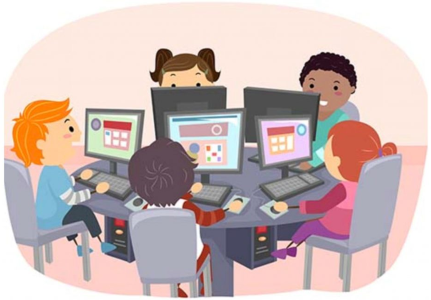
Hello Friends! What is one word that comes to mind when you think about gaming? If you thought about fun, you are probably not alone in giving that answer. This is one reason why teachers are using educational gamification and tactile technology to help incorporate several learning strategies in the classroom. Children are often eager to have fun and by playing these educational games, they can have fun while learning. In using this technology, teachers can ensure students learn about collaboration and critical thinking skills. Students can use the Think-pair-share strategy as you present a game or video and ask them to think about it and engage in collaboration afterwards.
Technology in Education
Many educators and students already use technology in school. You will probably find some form of electronic device, tablet, Chromebook, iPad, or desktop computer in each classroom, making it accessible to students. Children have (for the most part) learned how to navigate websites and regularly watch videos online. Technology and gaming are not just for having fun, they are also good resources for learning. Using tactile technology and assistive technology such as special keyboards, headphones, virtual headsets, etc. can be useful to integrate in a classroom full of children of different backgrounds and needs.
How Does Gaming Help Diverse Learners?
Gaming can teach students various lessons, problem-solving skills, and collaborative learning. It can also be engaging and motivating. There are many educational games out there to choose from made for different grade levels and learning styles. Some games even read aloud to the player with text-to-speech. These uses of technology and gaming can be beneficial to children with learning disabilities. English Language Learners will also benefit from the use of this technology and gaming because it is easier for them to understand visuals. Students can even get translations with some videos.
Learning While Playing Games!
Let me give you two video game-based learning apps that I find appealing for elementary students and diverse learners. The first is called Splash Learn, and it is a helpful resource for learning math and reading. It gives teachers and students the ability to personalize and scaffold learning. I like that it allows teachers to send reports to parents on student achievement or progress. Also, it is free for teachers, and their students may use it at home with a code.
Check This App Too!
Another great option for fun, educational, (elementary) games that parents, teachers, and students enjoy is abcmouse.com. It teaches many subjects; it is also easy to use and engaging!
Even though gaming is a fun way of having students engaged in a lesson, there are educators that do not like to use this technology. Some critics say that games can consume more time than necessary and take from instructional time. I say it is up to you to incorporate gaming and technology into your classroom and have students learn the desired curriculum. Let the games begin!